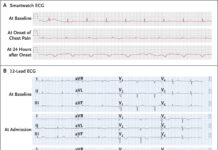
Rhabdomyomas: congenital cardiac masses
Pediatric heart tumours are rarely reported in infants and children. However, there have been several unique cases reported by individual institutions. The case primarily discusses cardiac rhabdomyomas, which is a common fetal cardiac tumour. The incidence of tumours is, however, very low. The tumours are often found in routine prenatal ultrasounds during the 15th and 30th weeks of gestation.
Studies have shown that the tumours, in many cases, are associated with tuberous sclerosis, a rare genetic multisystem disorder that is evident after birth. However, not all rhabdomyomas are an indication of tuberous sclerosis. In addition, tuberous sclerosis may have varied clinical manifestations. 30% of the cases are inherited, whereas 70% are because of de novo mutations. The mutations inactivate the genes responsible for tuberin and hamartin proteins. These genes have the role of tumour suppression. The tumours may present with unique complications. The size and location of the tumours pose a problem and can occupy the interventricular septum, right and left ventricles and atrioventricular valves. The rhabdomyomas presents with an array of complications. For example, the size and location of the tumours can be problematic.
Case study
This article highlights the case of an African American male infant born at 39 weeks and 1 day of gestation. The newborn’s prenatal echocardiography did not show any signs of cardiac tumours. The infant was admitted to the neonatal intensive care unit (NICU) after birth. The infant was delivered via a spontaneous vaginal delivery with a birth weight of 3.03 kg. The baby’s mother was signed up for prenatal care and had 12 visits prior to the birth of her child. The mother was referred for fetal echocardiography at 32 weeks 5 days of gestation as doctors suspected a fetal arrhythmia. The echo findings were significant for two small echogenic, RV apex and septal masses, consistent with the diagnosis of rhabdomyomas.
Doctors further advised another prenatal ultrasound in the third trimester which was significant for oligohydramnios. Before delivery, the patient’s mother was group B Strep positive. Treatment included six doses of intrapartum penicillin for treatment. After birth, the baby was admitted to the NICU for postnatal cardiac evaluation and tuberous sclerosis concerns.
The baby’s birth was uncomplicated despite the rhabdomyomas
The baby was born via an uncomplicated birth. Based on the prenatal fetal echocardiogram findings, the baby was referred for pediatric cardiology, neurology, and pediatric ophthalmology for consultation. The baby had signs of brown-coloured emesis after admission and was given nothing by mouth. Doctors performed a gastric lavage and started the baby on intravenous fluids. There were no further episodes of emesis reported. And the patient was started on PO (by mouth) which was then gradually increased. The infant had no further concerns for the rest of the stay at the hospital and tolerated full PO enteral feeds.
The study further states that an electrocardiogram (EKG) and transthoracic echocardiogram were performed contingent on the prenatal echocardiogram findings. The findings showed “normal sinus rhythm, and the EKG was normal for age. These masses appeared smaller in the postnatal than on the prenatal echocardiogram evaluation (per the echo report, the cardiologist could not appreciate the dimensions of the tumours). There was no cardiac inflow or outflow obstruction, and normal cardiac structure and function were reported. There were no cardiac rhythm abnormalities”.
Postoperative period
The infant was hemodynamically stable during the 4-day stay at the hospital. Doctors referred the patient for an infant reevaluation and imaging in 3-4 months. The imaging could have been done earlier if the size of the cardiac masses cause hemodynamic instability. A pediatric consultation was also done, which showed no significant findings. There were no dermatological findings either. Cranial and renal ultrasounds also did not show any significant findings. Doctors further advised an MRI of the brain. The findings of the scan were not suggestive of any intracranial manifestations consistent with the diagnosis of tuberous sclerosis. Genetic testing was also done to rule out tuberous sclerosis.
At the time the patient was discharged, outpatient follow-up appointments were arranged with relevant departments. At the patient’s 3-month follow-up, the rhabdomyomas had disappeared. The results of the tuberous sclerosis genetic tests were also negative. “Rhabdomyomas are extremely rare and unique tumors. These tumors are very dangerous, but they usually regress after birth. During the prenatal period, early cardiac tumor detection provides important information about fetal wellbeing, delivery planning, and necessary postnatal care”.
Source: Journal of Medical Case Reports



